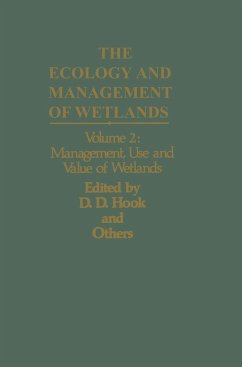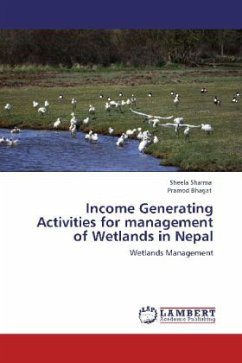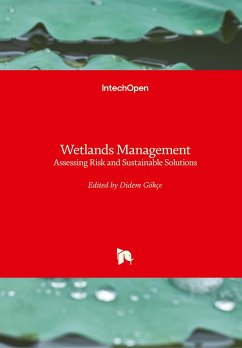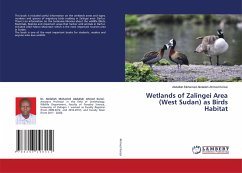
The Ecology and Management of Wetlands
Volume 2: Management, Use and Value of Wetlands
Versandkostenfrei!
Versandfertig in 1-2 Wochen
39,99 €
inkl. MwSt.

PAYBACK Punkte
20 °P sammeln!
This book contains the proceedings of a symposium held at the College of Charleston. Charleston. South Carolina. USA. 16-20 June. 1986. The seed for this symposium arose from a group of physiologists. soil scientists and biochemists that met in Leningrad USSR in July 1975 at the 12th Botanical Conference in a Session organized by Professor B.B. Vartepetian. This group and others later conspired to contribute to a book entitled Plant Life in Anaerobic Environments (eds. D.D. Hook and R.M.M. Crawford. Ann Arbor Science. 1978). Several contributors to the book suggested in 1983 that a broad-scope...
This book contains the proceedings of a symposium held at the College of Charleston. Charleston. South Carolina. USA. 16-20 June. 1986. The seed for this symposium arose from a group of physiologists. soil scientists and biochemists that met in Leningrad USSR in July 1975 at the 12th Botanical Conference in a Session organized by Professor B.B. Vartepetian. This group and others later conspired to contribute to a book entitled Plant Life in Anaerobic Environments (eds. D.D. Hook and R.M.M. Crawford. Ann Arbor Science. 1978). Several contributors to the book suggested in 1983 that a broad-scoped symposium on wetlands would be useful (a) in facilitating communication among the diverse research groups involved in wetlands research (b) in bringing researchers and managers together (c) and in presenting a comprehensive and balanced coverage on the status of ecology and management of wetlands from a global perspective. With this encouragement. the senior editor organized a planning committee that encompassed expertise from many disciplines of wetland scientists and managers. This committee, with input from their colleagues around the world, organized a symposium that addressed almost every aspect of wetland ecology and management.












